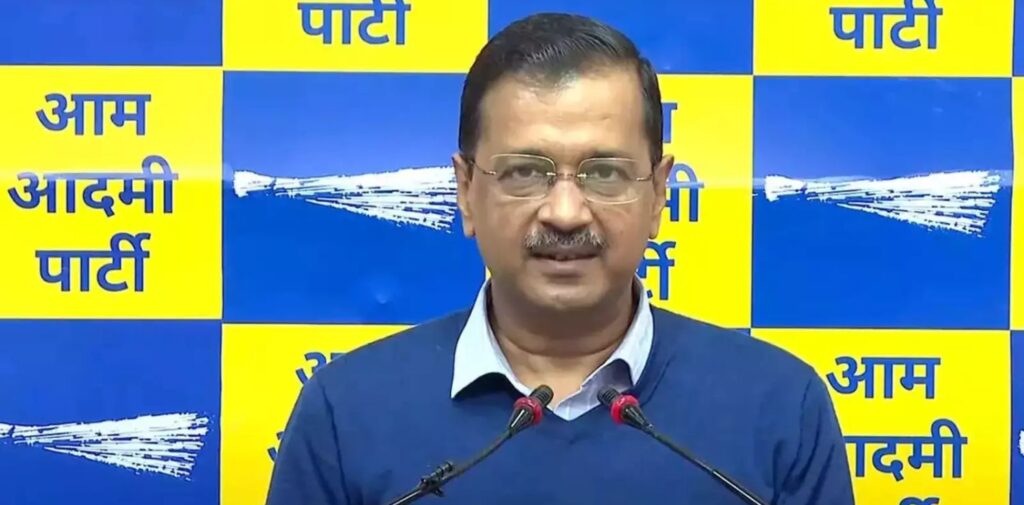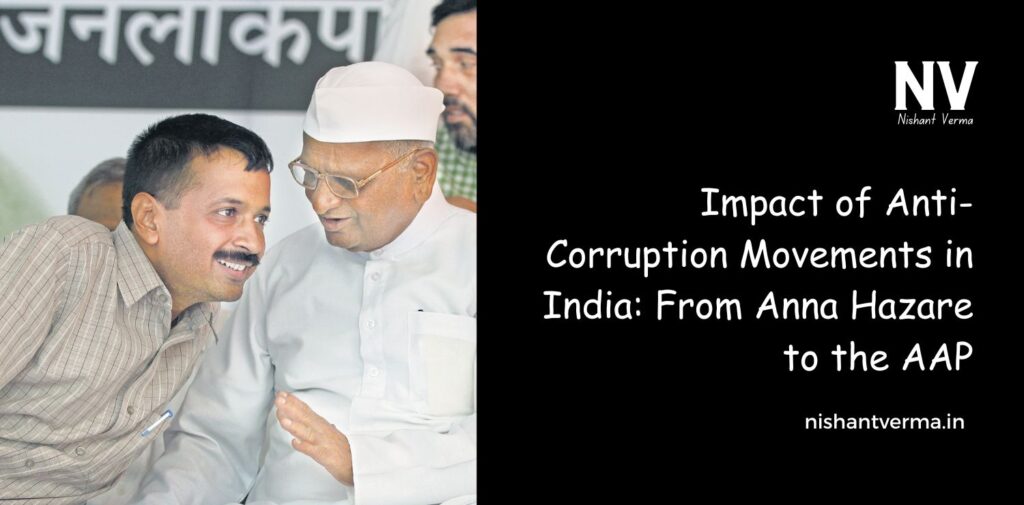Corruption is a big problem in many countries, and India is no exception. Over the years, people in India have been fighting against corruption, wanting to make the country a better and fairer place for everyone. The fight against corruption has been led by many leaders and movements. Some of the most famous anti-corruption movements in India have been led by Anna Hazare and have later contributed to the rise of the Aam Aadmi Party (AAP). These movements have had a huge impact on Indian politics and society.
In this article, we will explore the history and impact of these anti-corruption movements in India, starting from Anna Hazare’s movement to the rise of AAP. Let’s see how these movements have changed the political landscape of India.
What is Corruption?
Before we dive into the movements, let’s first understand what corruption means. Corruption happens when people in power, like politicians or government officials, use their position for personal gain instead of serving the people. It can take many forms, such as bribery, stealing money meant for public services, or giving unfair advantages to friends or family. Corruption harms the poor, causes injustice, and slows down the progress of the country.
Over the years, corruption has been a big problem in India. Many people felt that the government was not working for the common people and was instead helping a few powerful people to become richer. This is where the anti-corruption movements came in.

The Rise of Anna Hazare’s Movement
One of the most famous anti-corruption leaders in India is Anna Hazare. He is a social activist who became very popular for his fight against corruption. Anna Hazare’s journey began in the year 2011, when he led a nationwide movement demanding a law called the Jan Lokpal Bill. This law would create an independent body, called the Lokpal, to investigate corruption in government offices.
Anna Hazare believed that the existing system of investigating corruption was not strong enough. He wanted a new system where the people could directly fight against corruption without relying on politicians or government officials who themselves might be corrupt. His idea was simple: an independent institution that would have the power to punish corrupt officials, making the government more accountable to the people.
The 2011 Hunger Strike
In April 2011, Anna Hazare decided to take a bold step. He started a hunger strike (where he refused to eat food) to protest against the government’s failure to pass the Jan Lokpal Bill. This hunger strike took place in Jantar Mantar, Delhi, and quickly gained attention from all over the country.
The people of India were frustrated with the level of corruption in the government, and Anna Hazare became a symbol of hope for many. Thousands of people, especially youth, joined Anna Hazare’s movement. They protested in cities across India, demanding that the government listen to their demands.
Anna Hazare’s hunger strike became so powerful that the government was forced to take notice. The Prime Minister of India at that time, Manmohan Singh, had to give in to the pressure. Eventually, the government agreed to create a committee to discuss the Jan Lokpal Bill.
Although Anna Hazare’s movement did not immediately result in the passing of the bill, it sparked a new wave of awareness about corruption and the need for government reforms. His movement showed the power of public protest and how people could unite to bring about change.

The Birth of the Aam Aadmi Party (AAP)
While Anna Hazare’s movement raised awareness about corruption, it also led to the creation of a new political party in India: the Aam Aadmi Party (AAP). The AAP was founded in 2012 by Arvind Kejriwal and other members who were part of Anna Hazare’s movement.
Arvind Kejriwal was a close associate of Anna Hazare and had played a key role in the anti-corruption movement. He believed that the fight against corruption needed to go beyond protests and campaigns and that there should be a political party dedicated to fighting corruption from within the system. That is how the AAP was born.
The word Aam Aadmi means common man in Hindi. The AAP was formed with the goal of representing the common people of India, those who were tired of the corrupt political system. Arvind Kejriwal and his party promised to bring a new style of politics, one that was transparent, honest, and focused on the welfare of the people.
AAP’s First Big Success: Delhi Elections
In 2013, just one year after its formation, the AAP contested the Delhi Legislative Assembly elections. Despite being a new party with little experience, the AAP surprised everyone by winning 28 out of 70 seats. This was a major victory for the party and a sign that people were tired of the old, corrupt political system and wanted a change.
Arvind Kejriwal became the Chief Minister of Delhi after the AAP formed a coalition government. This was a historic moment because a new party with no experience in running the government had managed to win the trust of the people. The AAP’s victory was seen as a message that people wanted clean and honest leadership, free from corruption.
However, the AAP’s time in power was short-lived. After just 49 days, Arvind Kejriwal and his party resigned because they could not get the support they needed from other political parties to pass their anti-corruption laws. Despite this, their success in Delhi was seen as a huge achievement, and it gave the AAP national attention.
AAP’s Growth and Challenges
After their initial success in Delhi, the AAP went on to contest in other states across India. In the 2014 Lok Sabha elections, the party expanded its presence and contested in several constituencies, but it didn’t win many seats at the national level. However, the party continued to grow in Delhi, and in the 2015 Delhi Legislative Assembly elections, the AAP won a landslide victory, securing 67 out of 70 seats.
This victory was a clear sign that the people of Delhi believed in the AAP’s promise of fighting corruption and providing clean governance. The AAP’s success showed that anti-corruption movements could lead to real political change.
However, the AAP has also faced challenges. Some people accuse the party of being too focused on Delhi and not doing enough at the national level. There have also been internal disagreements within the party, which have led to some leaders leaving. Nevertheless, the party continues to play an important role in Indian politics, especially in the fight against corruption.

The Impact of Anna Hazare’s Movement and the AAP
The anti-corruption movements led by Anna Hazare and later by the AAP have had a lasting impact on Indian politics. Here’s how:
- Increased Public Awareness: Anna Hazare’s movement made millions of people aware of the level of corruption in the government. It showed that the people of India could come together to demand a change.
- Pressure on the Government: The movements put pressure on the Indian government to take corruption seriously. Even though the Jan Lokpal Bill has not yet been passed, these movements have made the fight against corruption a major issue in Indian politics.
- Political Change: The rise of the AAP showed that a new party, focused on anti-corruption and good governance, could make a difference in India’s political system. The AAP’s success in Delhi showed that the common man wanted clean and transparent leadership.
- New Expectations from Politicians: Today, people expect more from their leaders. They want them to be honest, transparent, and accountable. Political parties and leaders are now more aware that corruption can cost them the trust of the people.
Conclusion – Impact of Anti-Corruption Movements
The fight against corruption in India, led by movements like Anna Hazare’s hunger strike and the rise of the AAP, has brought about significant changes in the way politics works in the country. These movements have shown that people can come together to challenge corruption and demand a better system.
Though there are still challenges and corruption remains an issue, the anti-corruption movements have had a lasting impact on India’s democracy. They have shown that ordinary citizens, through unity and determination, can bring about real political change.
As India continues to grow and develop, the fight against corruption remains an important part of the country’s political landscape. The legacy of Anna Hazare and the AAP will continue to inspire future generations to demand a government that is truly for the people.




